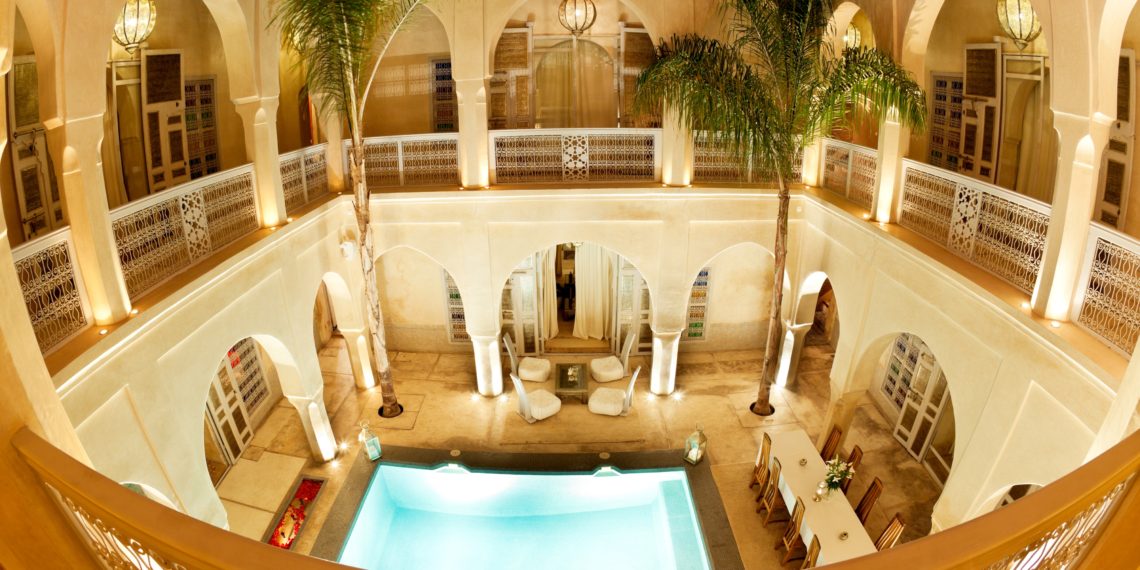Typically found in the medina (old city) of Moroccan cities like Marrakesh, Fez, and Rabat, a Moroccan riad is a classic residence or palace with an interior courtyard. Originally constructed as private residences for affluent families, the riads were intended to offer a cool, shaded haven from the sweltering sun as well as a sense of solitude and tranquillity. The center courtyard of a riad is one of its distinguishing characteristics; it frequently has a fountain, lush vegetation, and other things that convey quiet and tranquillity. The courtyard serves as the center of an interior arrangement for riads, with rooms and living areas opening onto it. In recent years, a large number of riads have been transformed into hotels or guesthouses, giving travelers the chance to experience the warmth and culture of traditional Morocco. A stay in a typical Moroccan home is an absolutely unique and unforgettable experience, whether you’re touring the busy streets of the medina or just unwinding in the tranquil setting of a riad.
The first riads appeared in Morocco in the ninth century as a means of adjusting to the country’s hot and arid climate. The massive walls helped keep the interior of the home cool and shielded it from the elements, while the central courtyard served as a cool and shady haven from the sweltering sun. Riads have developed over time to play a significant role in Moroccan architecture and culture, and they are today viewed as a representation of traditional Moroccan architecture and hospitality.
Over the centuries, Moroccan riads evolved to become more ornately decorated, with intricate tile work, colorful mosaics, and elaborate plasterwork adorning the walls and floors. Many riads also feature traditional Moroccan furniture and very old decor, such as low tables, cushions, and lanterns.
Staying in a traditional riad in Morocco is a great way to immerse yourself in the local culture and experience the country’s rich heritage first-hand. A riad is a traditional Moroccan house with a central courtyard and high walls, designed to provide a cool and shady refuge from the hot sun. Many riads have been converted into hotels, offering guests a unique and authentic experience in the heart of the city.
Another advantage of Moroccan riads is their peaceful and tranquil atmosphere. The interior courtyards are often secluded and quiet, providing a welcome respite from the bustling streets of the medina. Many riads also have rooftop terraces or gardens, offering panoramic views of the city or the surrounding countryside.
However, there are a few potential drawbacks to staying in a Moroccan riad. One issue is that these houses are often located in the narrow and winding streets of the medina, which can be confusing and difficult to navigate for visitors. It can also be challenging to find parking near a riad, and some may not have elevators, making them less accessible for travelers with mobility issues.
When staying in a Moroccan riad, guests can expect a warm and hospitable welcome from the owners or staff. Many riads offer traditional Moroccan breakfast and dinner options, as well as other amenities such as massages or hammam (traditional steam bath) treatments. Some riads may also have a pool or spa area for guests to relax in.
Overall, staying in a Moroccan riad can be a truly memorable and authentic experience for travelers looking to immerse themselves in the culture and history of Morocco. While there may be some challenges to navigate, the peaceful and tranquil atmosphere of these traditional houses, as well as the warm hospitality of the owners and staff, make it a unique and worthwhile choice for travelers.





